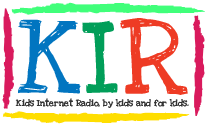
How Sounds Are Made
Lip's
Your lip's change position for most sounds. They can be open or shut; Spread or rounded
- Your lips change position for most sounds.
- Lip's can be open, shut, spread or rounded.
- Look in a mirror to see the difference between the sounds: /p/, /f/, /s/, /r/, /w/, and /ar/
Tongue
Your tongue changes positions for most sounds. It can be up or down; in the front, in the middle or at the back of the mouth.
- Your tongue changes position for most sounds.
- The tongue can be behind the top teeth - /t/, up at the back of the throat - /k/, or resting on the floor of your mouth - /s/.
- Some sounds are made by the tongue actually hitting against the part of your mouth - /t/, but other sounds are made by the tongue being held just close to it - /s/.
Airflow
For most sounds the air comes out of your mouth, sometimes it flows through your nose. It can be a short 'pop' or a long 'blow'.
- For most sounds air comes out of your mouth either as a short pop (/b/, /t/, /g/) or as long blow (/f/, /z/, /sh/).
- For /m/, /n/ and /ng/, the air flows through your nose.
Voice
Some sounds are made by your vocal cords vibrating. This is when your voice is 'on'. For some sounds your voice is 'turned off'. Your vocal cords stay still and open for these sounds.
- Many sounds are made by your vocal cord vibrating together. Feel your throat when you say the sounds /ar/, /b/, /v/, /z/.
- For other sounds your voice is turned 'off'. Your vocal cords don't vibrate, they stay open. Feel your throat when you say /p/, /f/, /sh/. Note: if your vocal cords are vibrating, your're probably putting 'uh' on the end - 'puh'. Say sounds like /p/ as a wisper, not 'puh' or 'duh' or 'kuh'.
READING IN THEMES
Let's begin, not so much with a game, as with a broad approach to reading.
You should believe that reading around themes is critical to fast progress, and the themes have to come from the child.
It's not good enough to simply offer reading material that we think will be beneficial. You also have to observe what interests the child, indeed what her/his passion is, and explore that.
Here's an example:
A Ten year old boy acquired a passion for animals at age three. This is not unusual. His parents supported him by taking him to the library every week, and letting him select the books that he wanted.
In the beginning, one of his parents would read these books to him every day, either after work or at bed-time.
By age four, he became immensely knowledgeable about animals around the world (Africa, Asia, the Americas). By 4 1/2 years, he was already reading short sentences by himself.
This reinforcing of his passion had a multiplier effect. It first led to his attempting to read on his own, because the knowledge was so pleasurable for him.
It also led to the development of his memory. You can imagine the amount of information these weekly bundles of books would contain.
Thirdly, it resulted in self-confidence, for he could recite unusual facts and details that even adults did not know or had forgotten about.
And finally, it led to other passions. Once he thought he knew all there was to know about animals, he found a passion in history.
Categorizing animals into different continents fostered his awareness of global geography. But with our son, it led to history. By age six, he began the exploration of the different civilizations that evolved on the various continents.
As with other boys, it started with a fascination for soldiers, armour and weapons. He would read anything that had to do with this theme.
A little girl is given the same support, although her passion was quite different.
At age 6, she developed a passion for novels. Whereas the little boy had little interest in stories, the girl revelled in the imaginary world of the novel.
She was taken to the library once a week to let her select the books that interested her. At first, she stayed with the children's themes, but later she quickly gobbled up the simplified versions of the classics.
Her reading really "took-off".
She read mostly on her own. Her parents job was to simply support her and encourage her.
The point I want to stress here is that you must find what interests the child at any one time. Once the child has a passion for something, her natural curiosity will take over, and the sky is literally the limit as far as how much she will read and learn.
SUMMARY:
1) Children first learn to read by being read to.
2) Children learn to read by hearing about things they have a passion for.
3) Children learn to read through subtle but unlimited encouragement and reinforcement.
